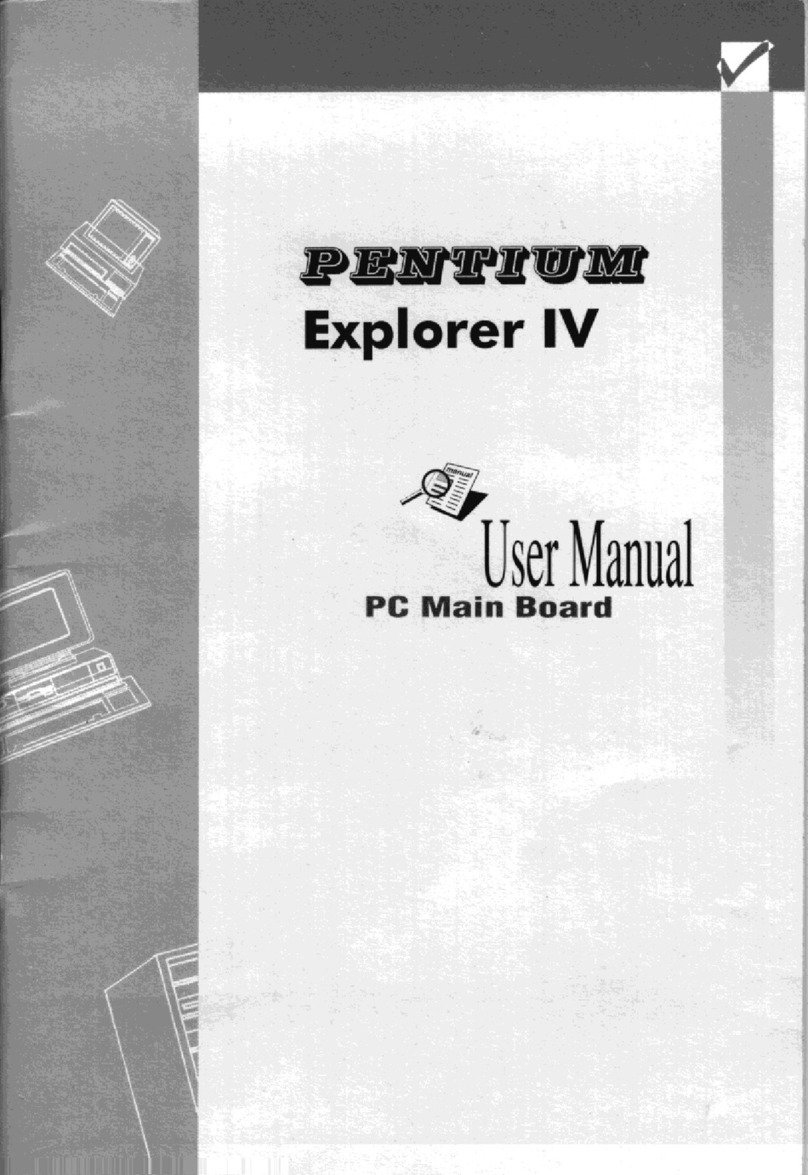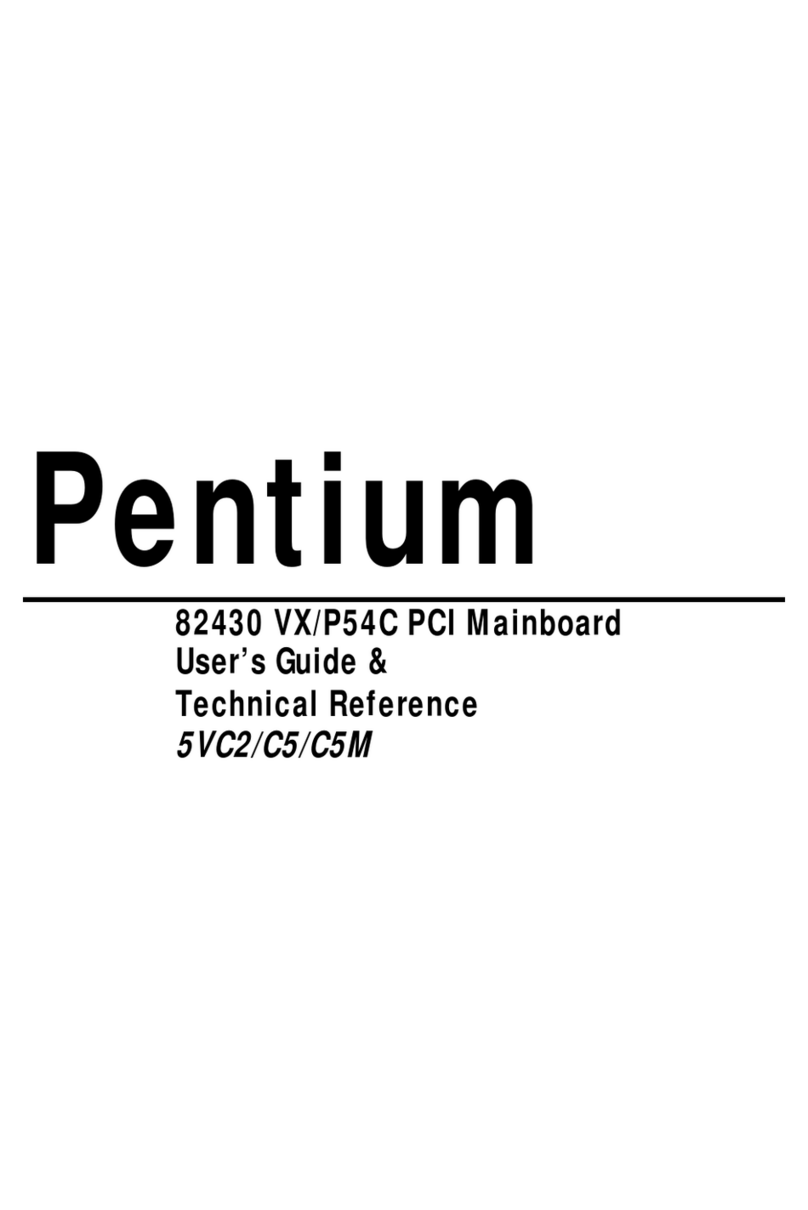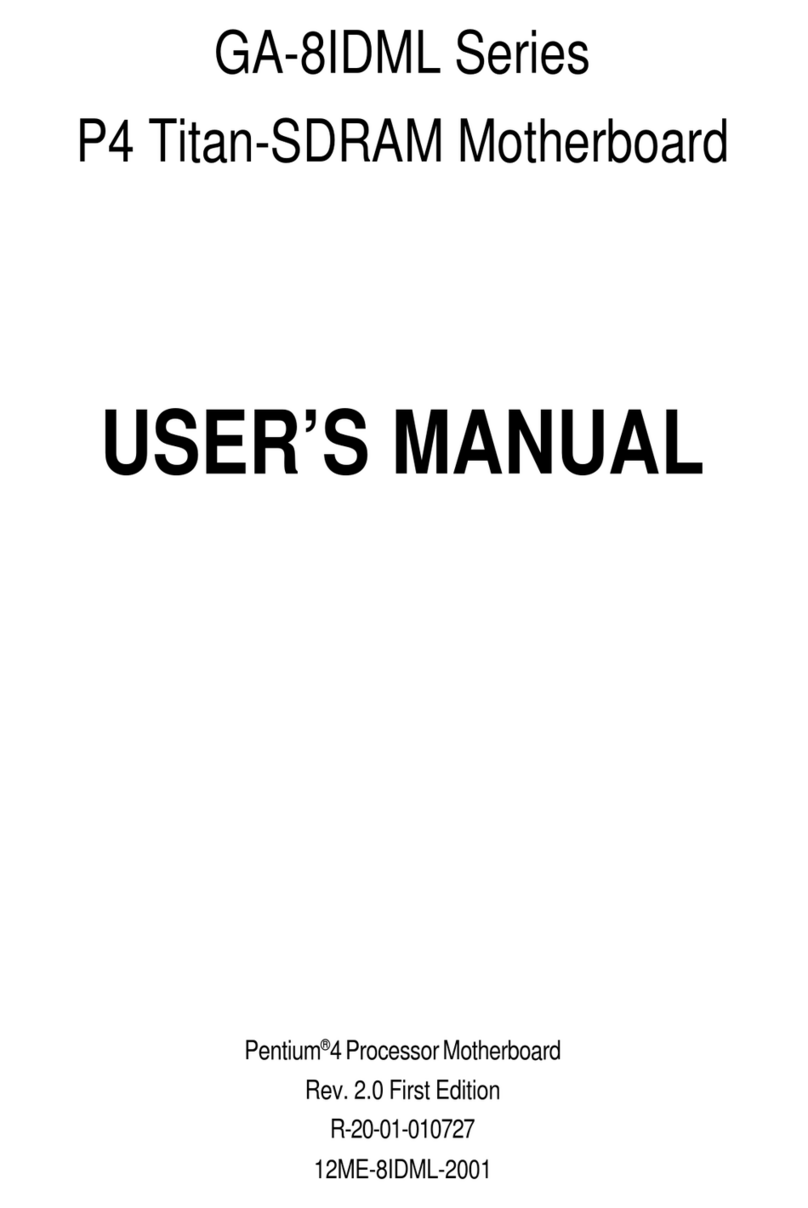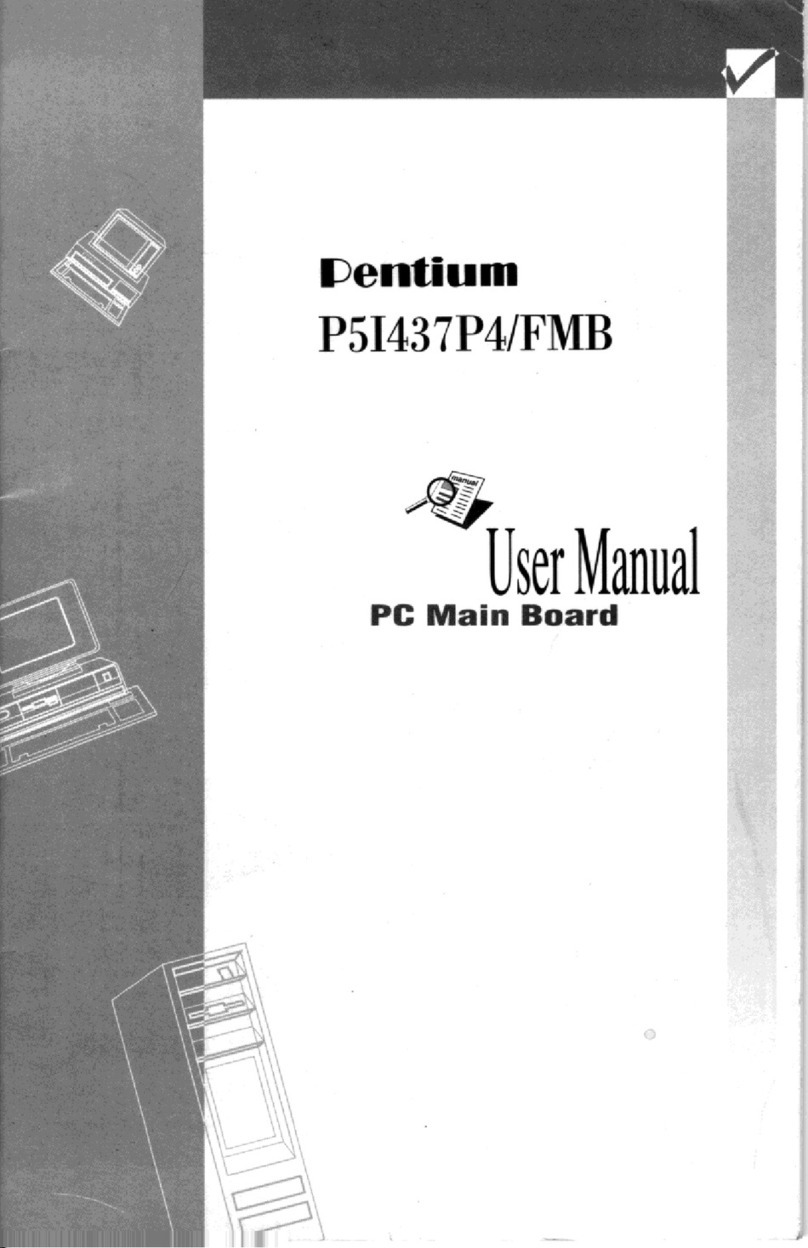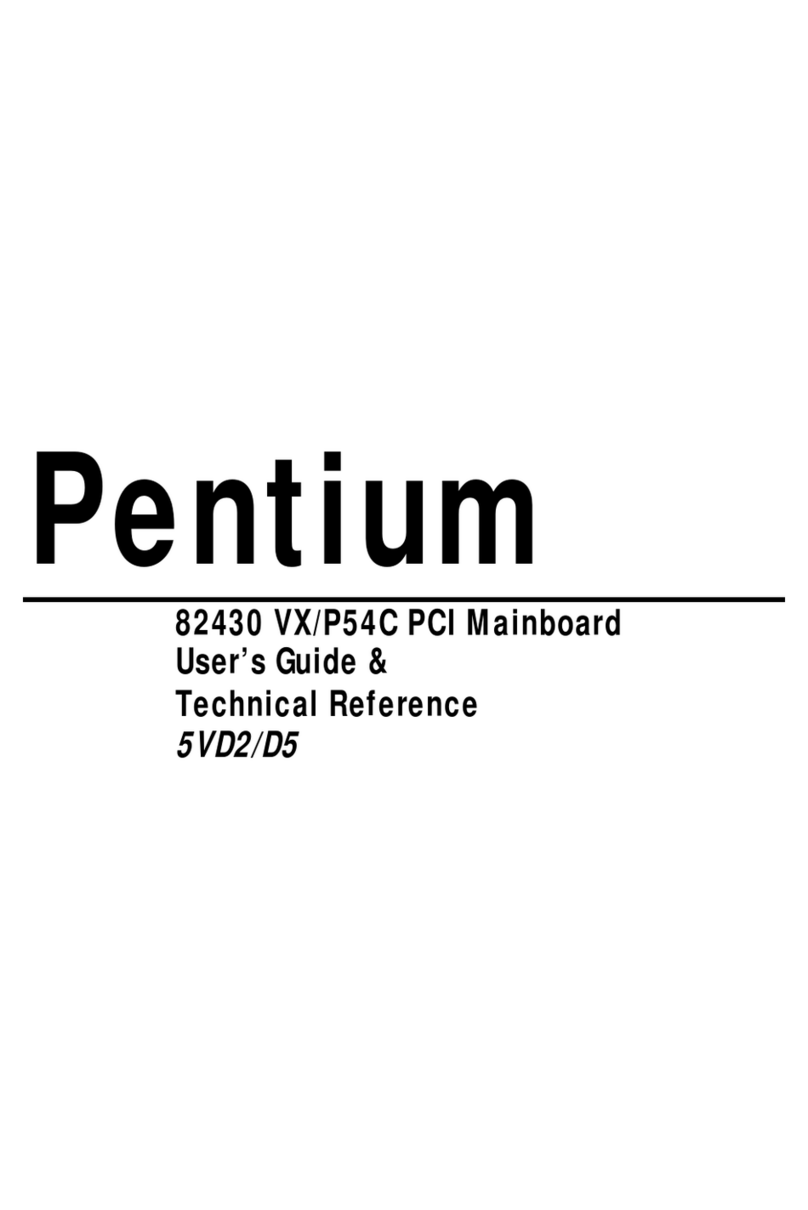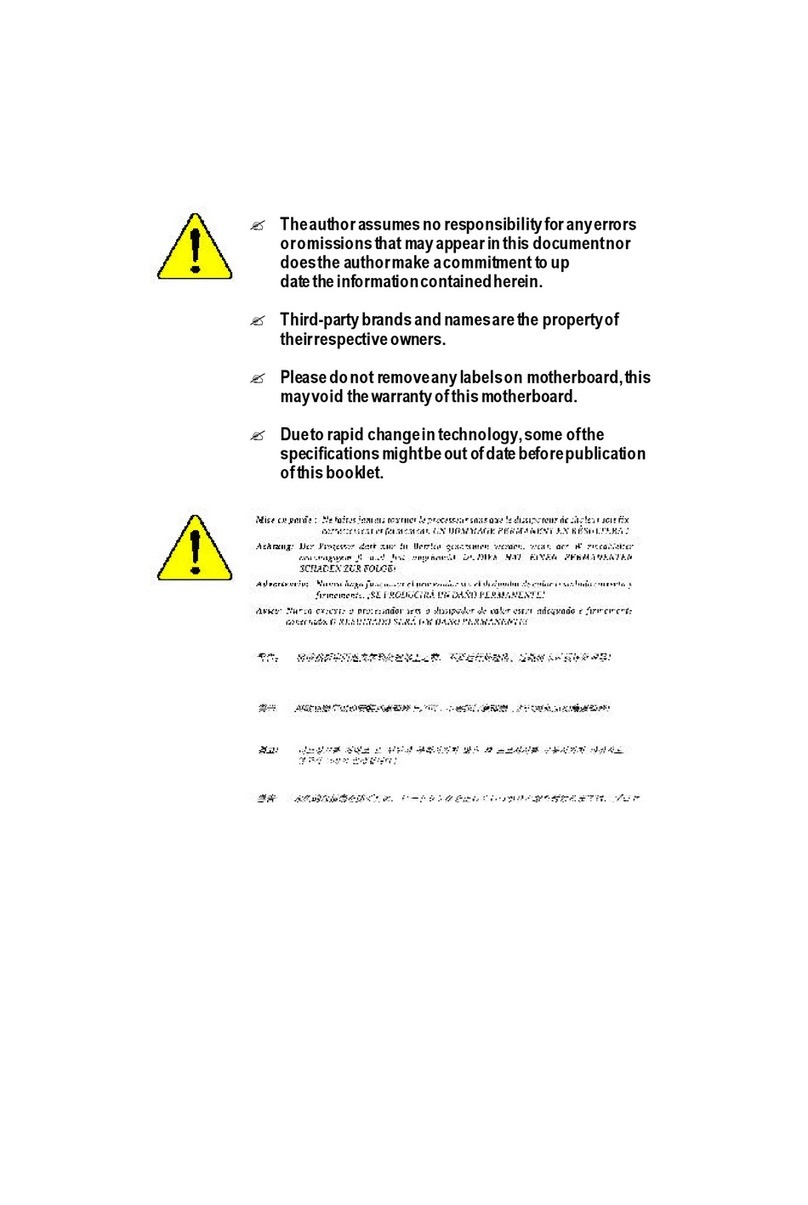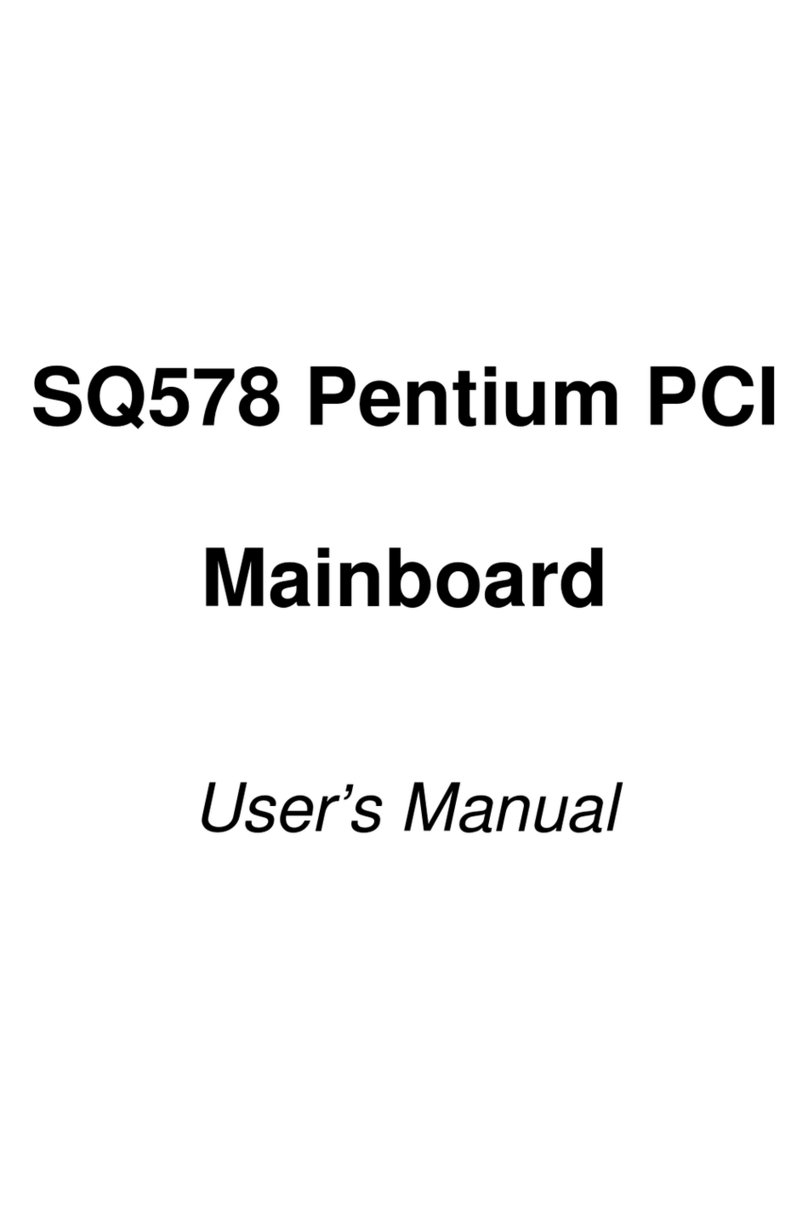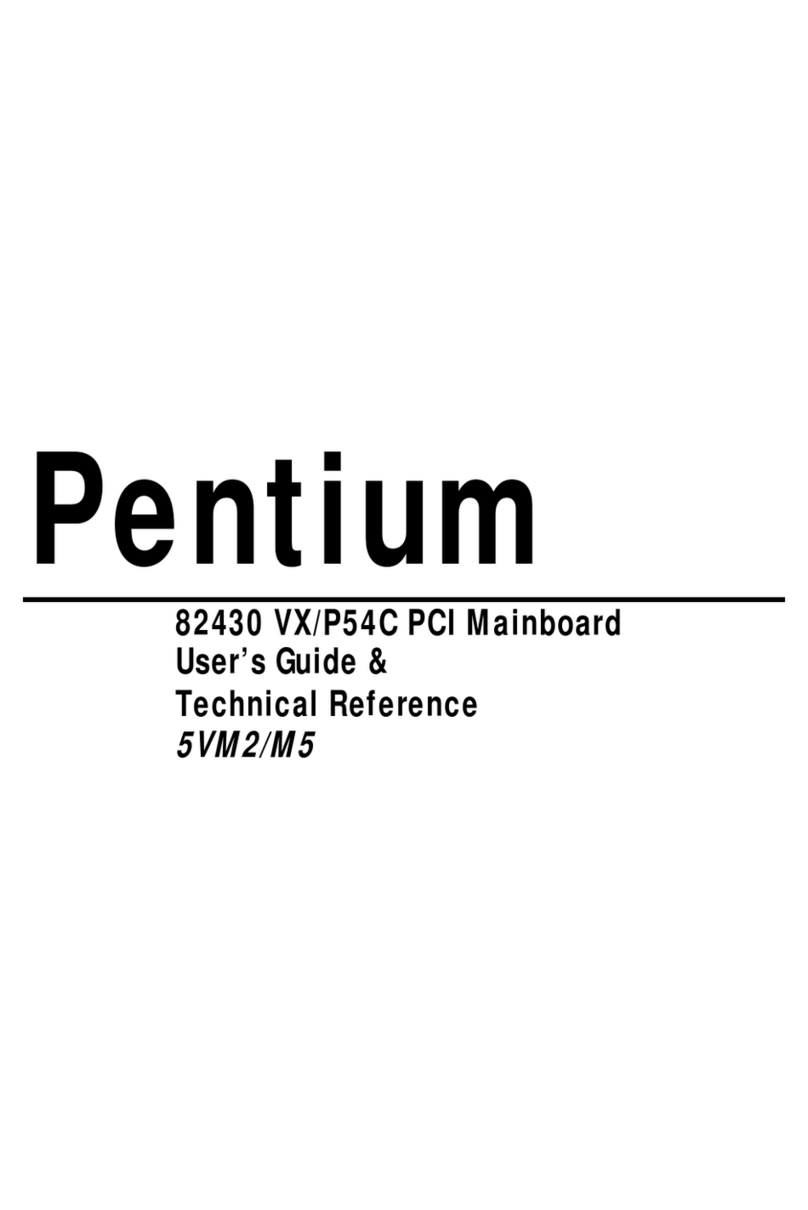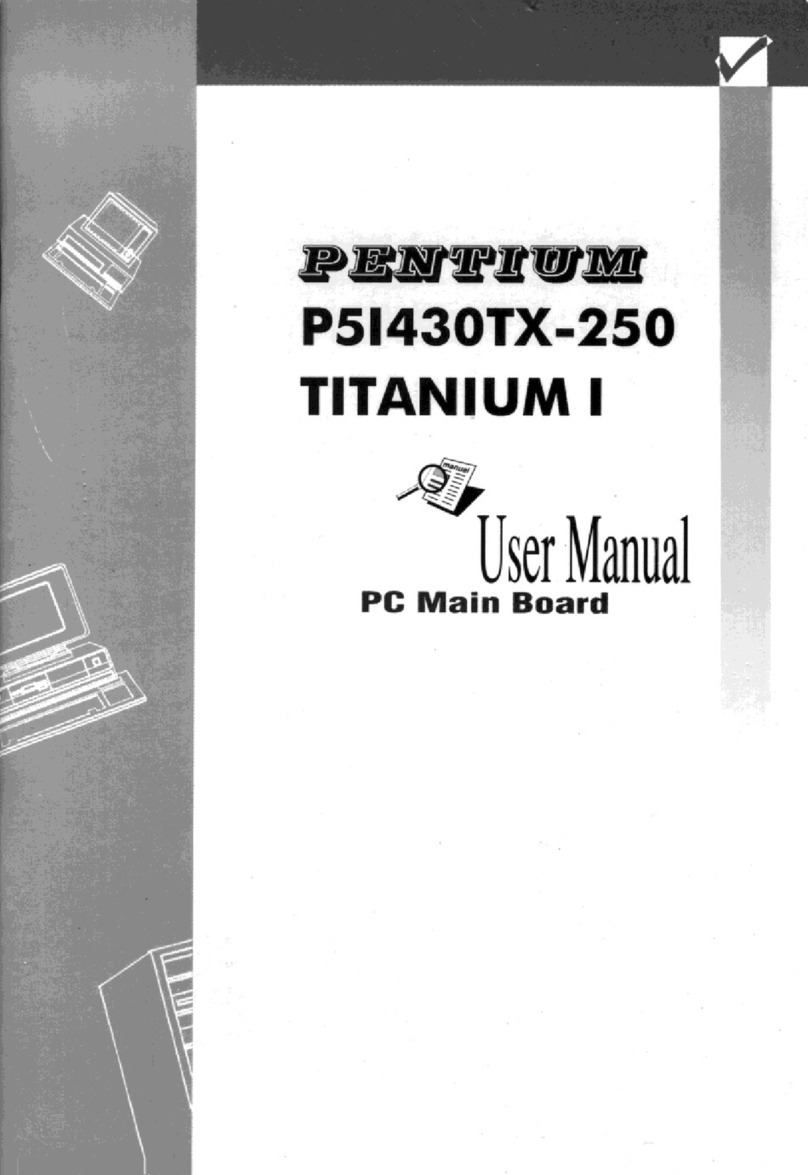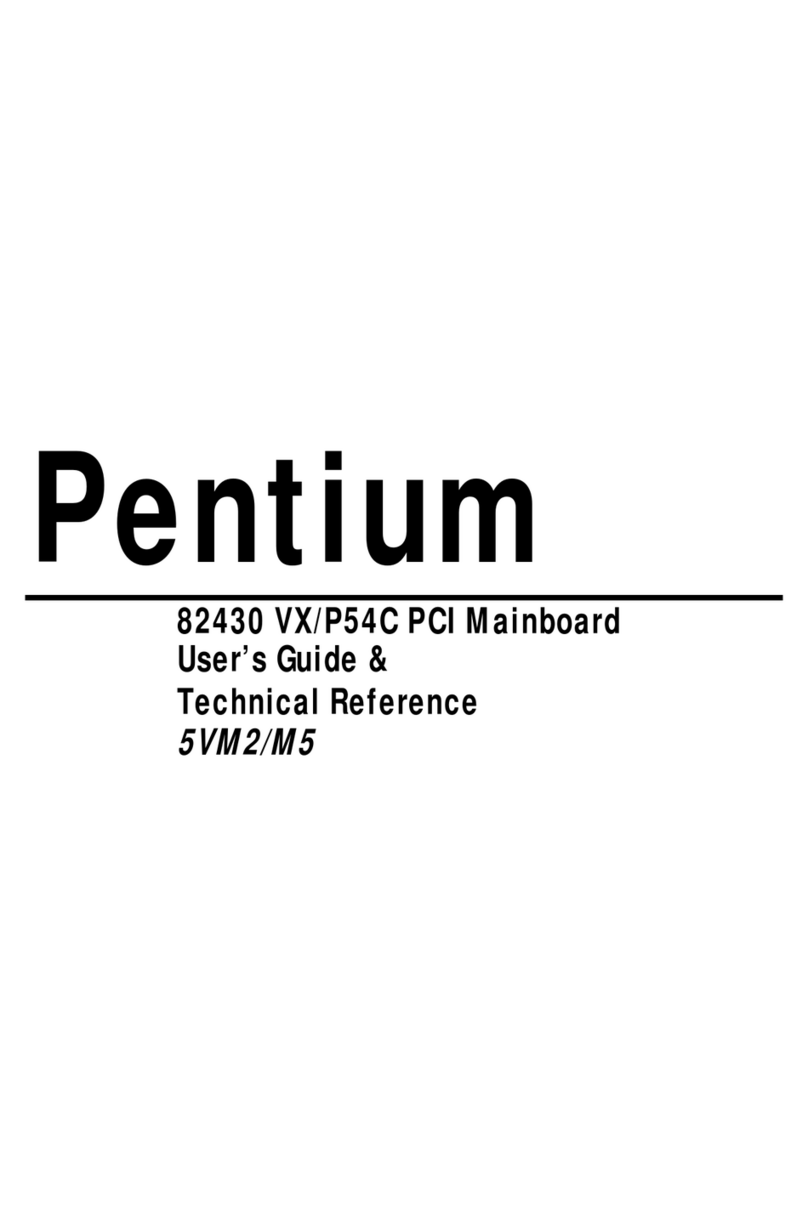
Introduction1-1
Chapter 1
Introduction
The P55-IT motherboard is a high performance system hardware based
on Intel Pentium processor and is equipped with four PCI slots, four
standard ISA slots, Super Multi-I/O controller and dual ports PCI-IDE
connectors for the future expansion. The hardware dimension is 220mm x
280mm with four layer design technology.
Specification
Intel Pentium Processor operating at 50/75, 60/90, 66/100, 60/120, 66/
133, 60/150, 66/166 MHz and P55C/P55CT with 321 ZIF socket 7,
VRM and scalability to accept faster Pentium Processors in the feature.
Supports up to 128 MegaBytes DRAM(minimum of 8 MB) on board(72
Pins SIMM x 4), and BIOS auto DRAM/EDO RAM configuration.(Refer
to Chapter 2-3 System Memory Configuration)
Supports both Fast Page DRAM orEDO DRAM SIMM.
INTEL Triton 82430FX PCIset chipset.
Supports Burst/Pipelined burst synchronous ( The COAST solution ) and
asynchronous L2 Write Back Cache. The cache memory combination
could be 256KB/512KB (32KB*8 or 64KB*8 SRAM respectively).
Support four 16 bits ISA slots, four 32 bits PCI slots, and provides two
independent high performance PCI IDE interface capable of supporting
PIO Mode 3 and Mode 4 devices. The P55-IT supports four PCI Bus
Masters and a jumperless PCI INT# control scheme which reduces
configuration confusion when plug in PCI I/O controller card(s).
Supports AT API (e.g. CD-ROM) devices on both IDE interface.
Supports 1 floppy port(up to 2.88 MB), 1 parallel port (EPP,ECP port),
and 2 serial port (16550 Fast UART compatible).
Supports a PS/2 style mouse and standard AT style keyboard connectors.
Support Award Plug & Play BIOS . The BIOS is stored in Flash EPROM
form. It provides better upgradeability for the system.
Supports CPU Hardware sleep and SMM (System Management Mode).
Supports hardware Turbo switch as well as BIOS hot key switching.
P55-IT utilizes Lithium battery which provides environmental protection
and longer life time.

